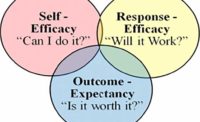Do you know your new NAICS number?
Environmental consultants now have their own number. So do hazardous waste collectors. What I'm referring to is the North American Industrial Classification System (NAICS). NAICS (pronounced 'knacks') is replacing the Standard Industrial Classification (SIC) code number that EHS pros, businesses, organizations, and the government have been using for statistical purposes since the 1930s. NAICS has yet to appear on the radar screen for most EHS pros. I'd guess that 95 percent or more will give you a blank stare if you ask them what they know about the topic. Some brainstorming will be necessary to ferret out the unique problems that NAICS will present to our profession. For example, safety and health pros have long used injury and illness statistics to compare performance against their identical SIC code number peers. This process will undoubtedly be used the same way within NAICS, but implementation delays and new classifications may offer more than just a few surprises. Another concern relates to OSHA recordkeeping for employee injuries and illnesses. Under the current system, certain SIC codes are exempted from recordkeeping. It's anyone's guess how this issue will be addressed under NAICS, along with the future revision of injury and illness recordkeeping rules.


